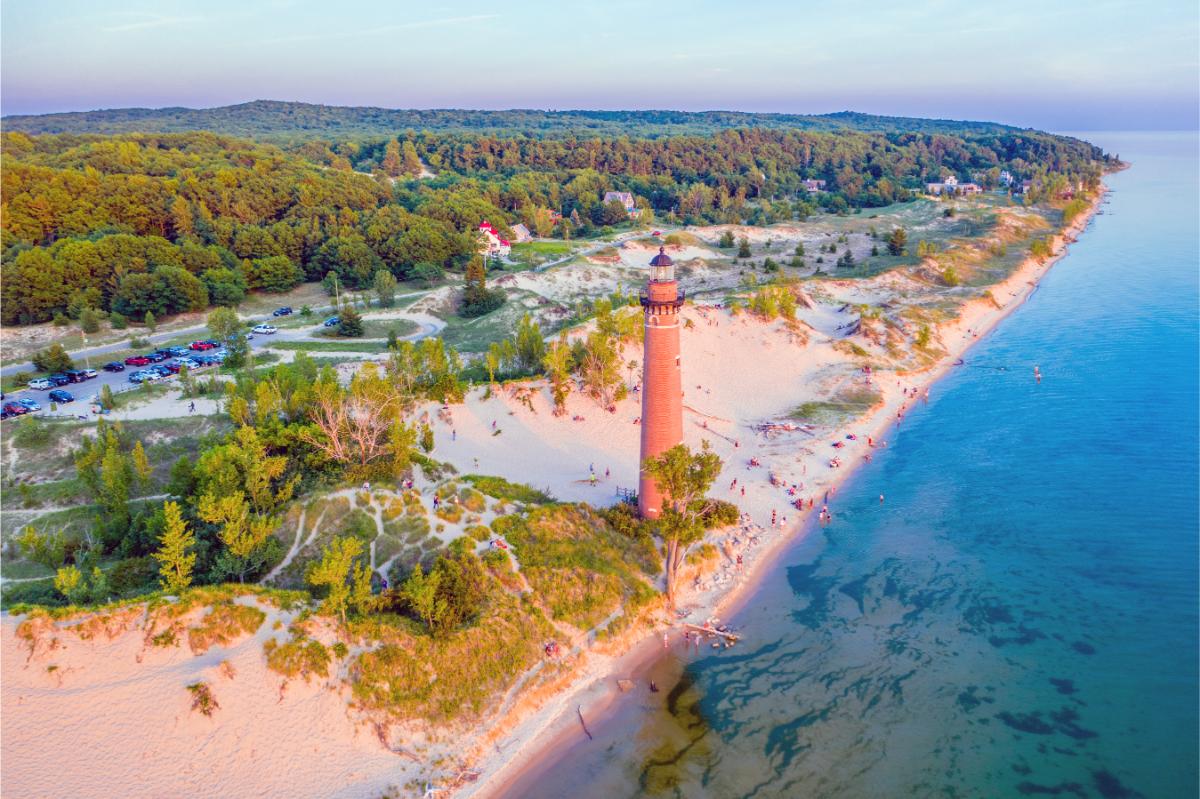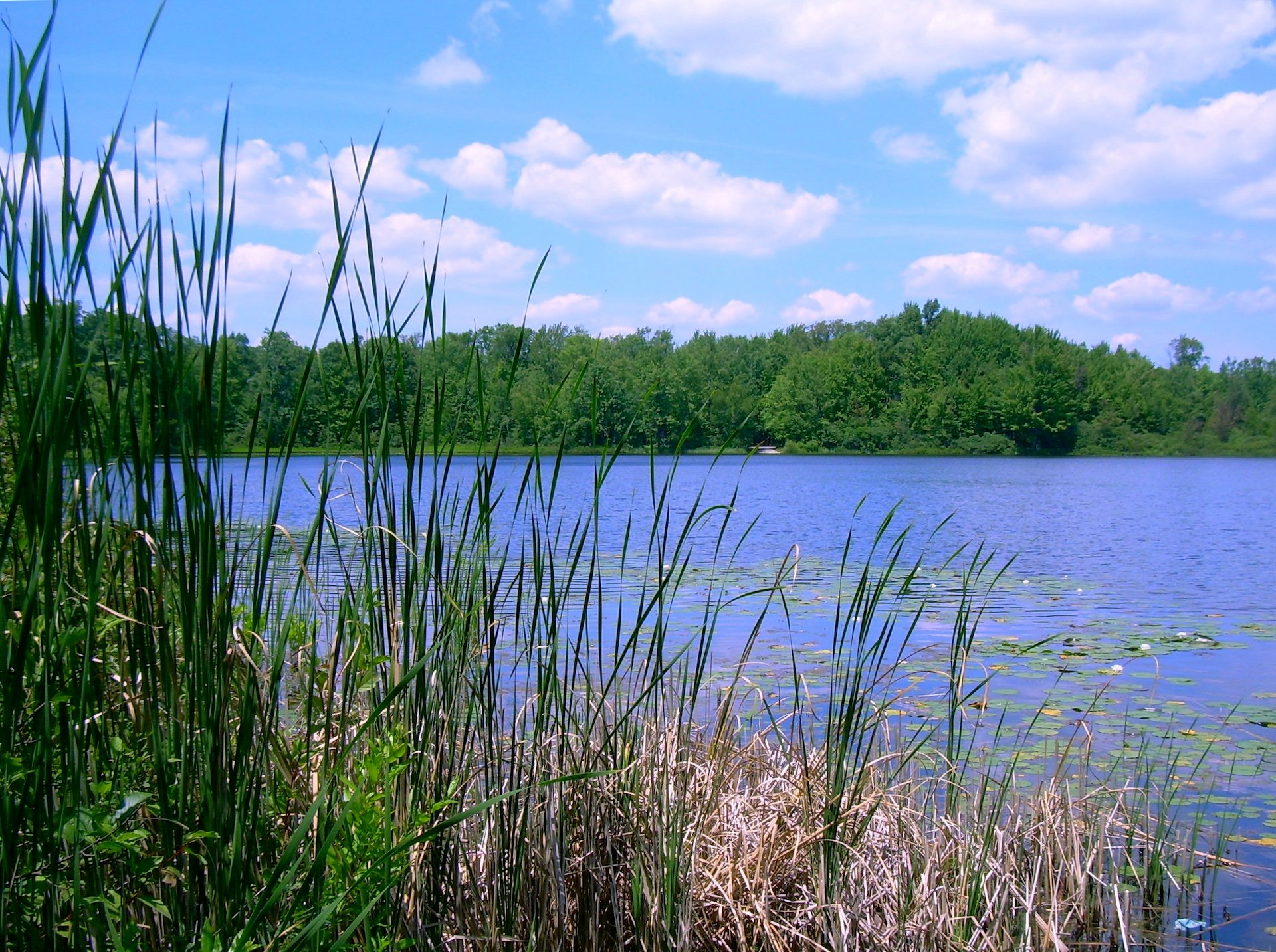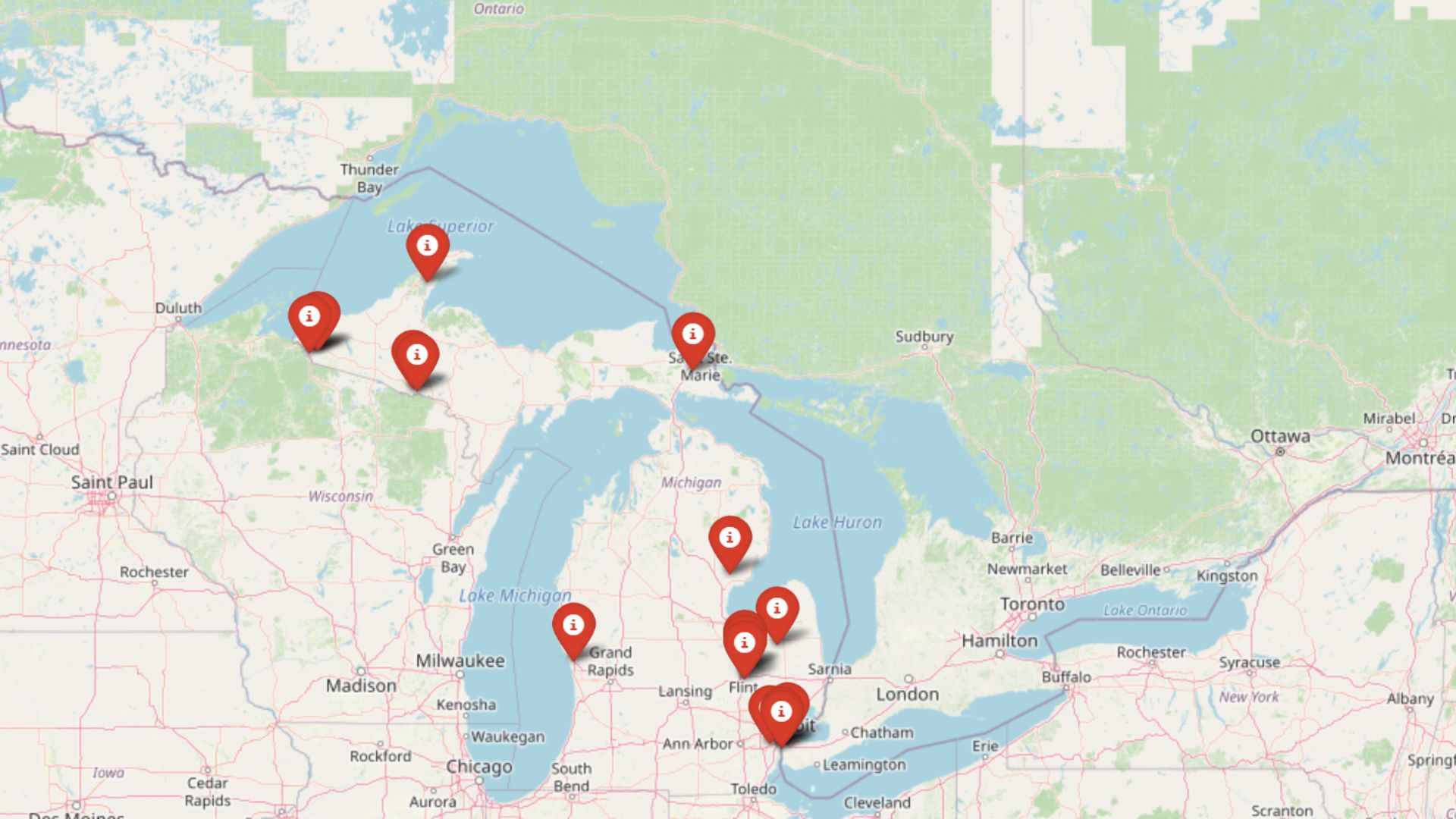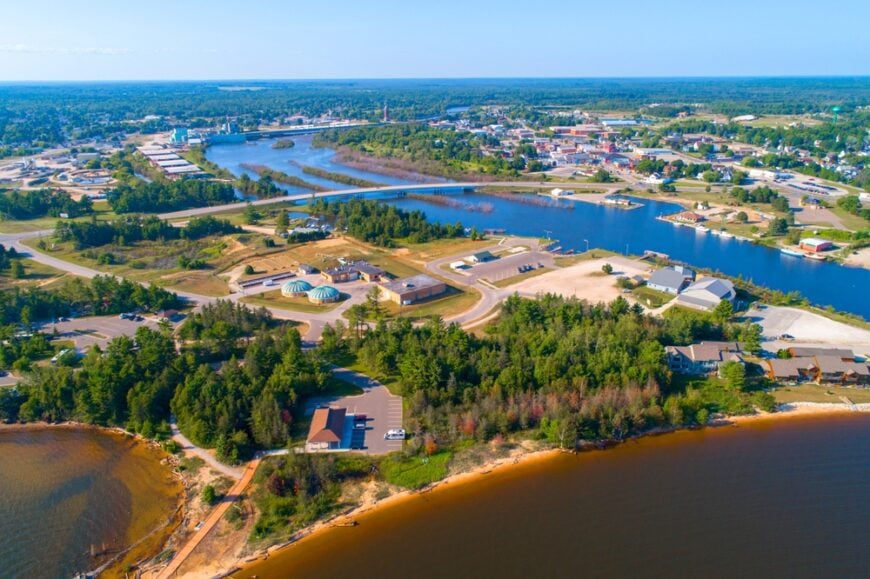
Some of my favorite Michigan memories come from the small towns scattered along the state’s freshwater coasts, where sailboats drift past historic lighthouses and sunsets ignite the horizon in jaw-dropping color.
These communities may be tiny on a map, yet each offers outsized scenery—towering dunes, rocky coves, and forests that seem to pour straight into the Great Lakes.
I love the slower pace that lets me linger over an ice-cream cone, poke around in local galleries, or watch freighters glide by without feeling rushed. You’ll find plenty to do—trail hikes, kayak trips, beachcombing for glimmering stones—but none of it overshadows the simple joy of being surrounded by natural beauty.
What follows is my countdown of the 15 most scenic small towns in Michigan, each one a postcard come to life. If you’re looking for a Great Lakes getaway, start here.
15. Saugatuck
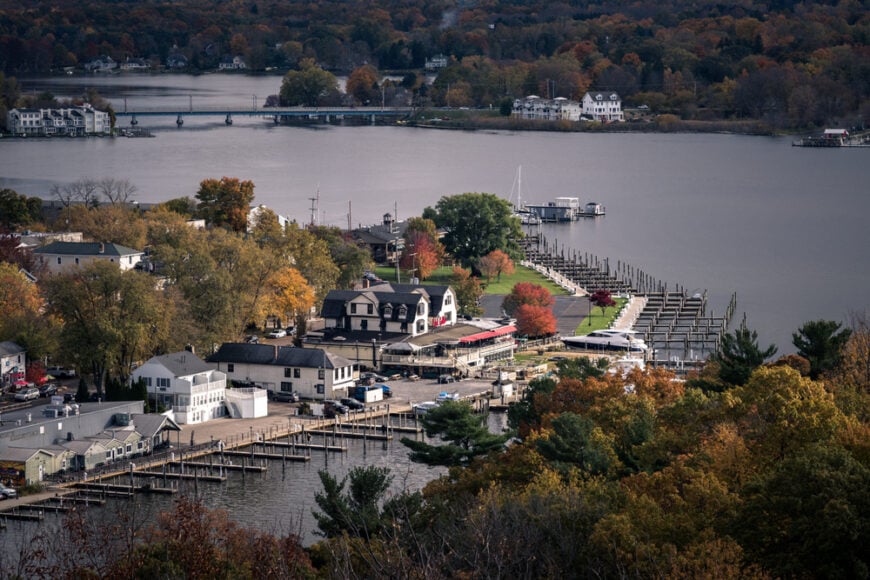
Saugatuck’s creative buzz mingles with the scent of freshwater just steps from Lake Michigan, making the village feel equal parts art colony and beach resort.
I like to begin at the dozens of downtown galleries before riding the hand-cranked Chain Ferry across the Kalamazoo River to Oval Beach, a sweep of sand that often lands on “best beaches” lists. From there, climbing Mt. Baldhead’s 302 wooden stairs rewards me with dune-top vistas that stretch clear to Chicago on a blue-sky day.
Between bites of peach pie from Crane’s and a sunset sail on the harbor, I quietly walk through the surprisingly wild Saugatuck Dunes State Park. If crowds gather in summer, I duck into the tucked-away Red Dock Café, a ramshackle waterfront bar where locals trade stories over zydeco music.
The scene feels like an artful canvas painted with sand, water, and friendly smiles. Saugatuck offers 3-4 bedroom homes priced between $350,000 and $650,000, making it a perfect spot for those looking to enjoy scenic views of the Great Lakes while exploring its vibrant arts scene.
Where is Saugatuck?
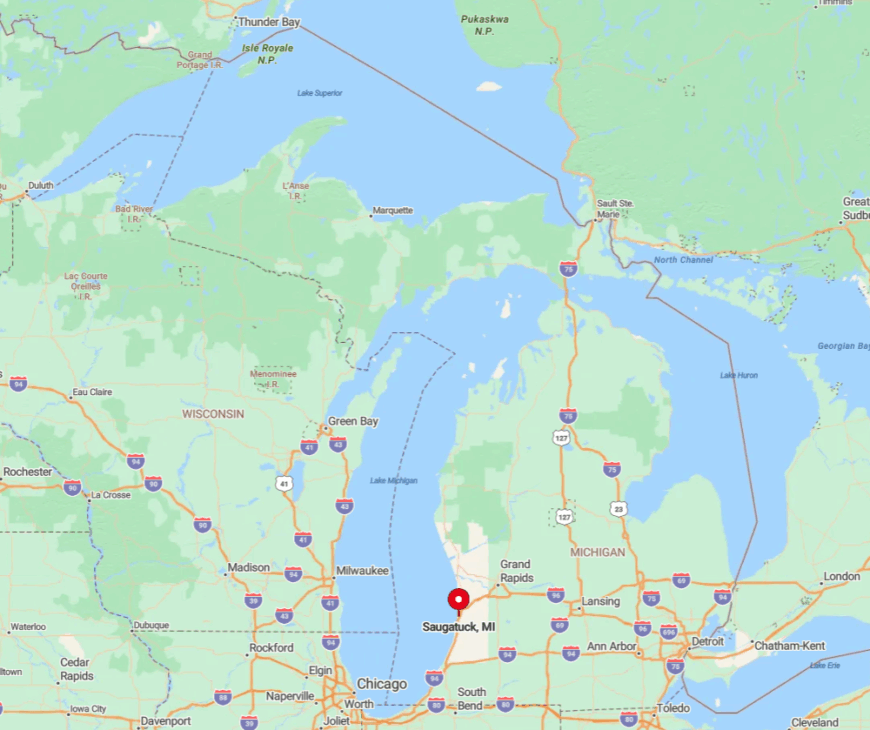
Saugatuck sits on Michigan’s southwest coast where the Kalamazoo River meets Lake Michigan, about 45 minutes southwest of Grand Rapids. Its pocket harbor lies just off I-196, making the town an easy two-and-a-half-hour drive from Chicago and Detroit.
Dunes hug the north and south shorelines, sheltering hidden coves best reached by kayak or the historic Star of Saugatuck paddleboat. Because there’s no commercial airport nearby, most visitors arrive by car, which helps the town keep its pleasantly unhurried vibe.
14. Leland
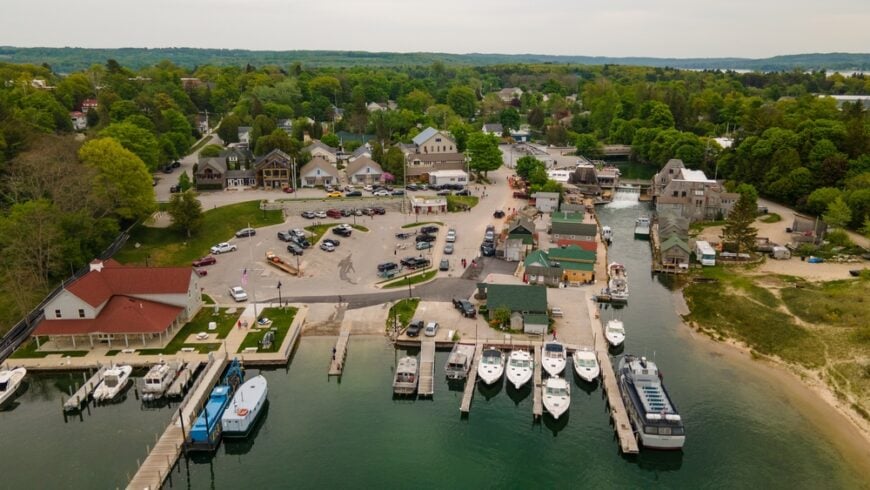
Time seems to pause in Leland’s Fishtown, a collection of weather-beaten shanties where fishermen still unload their daily catch and gulls hover hopefully overhead. I never skip a smoked-whitefish dip from Carlson’s Fishery before wandering upriver to browse boutiques tucked into former net sheds.
Van’s Beach, just around the corner, offers an uncrowded stretch of sand perfect for a quick swim or for watching the Manitou Island ferry glide out of the harbor. Inland, vineyard-lined back roads lead to wineries pouring crisp Rieslings that taste like summer in a glass.
On breezy evenings, I like to sit on the breakwall with a basket from The Cove and watch the sunset wash the docks in honey-gold light. Leland may feel small, yet its blend of working-waterfront grit and upscale charm keeps me lingering far longer than planned.
Leland presents 3-4 bedroom homes in the $400,000 to $700,000 range, a charming town where visitors can explore the beauty of the Great Lakes and picturesque waterfronts.
Where is Leland?
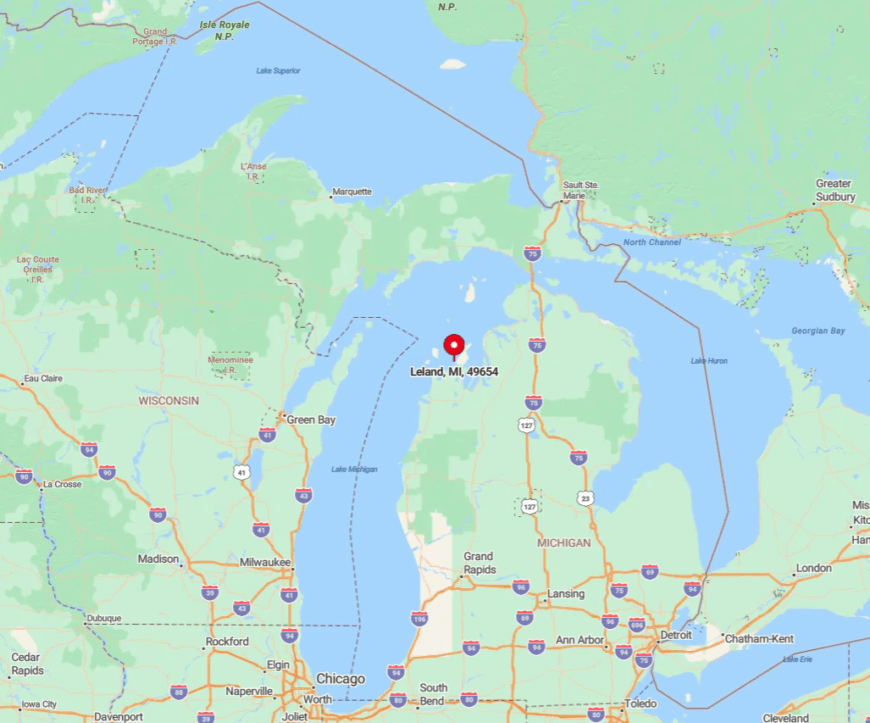
Leland anchors the tip of Michigan’s Leelanau Peninsula, wedged between Lake Michigan and the glacier-carved waters of Lake Leelanau. Reaching it involves the famously scenic M-22, a curving two-lane road that threads orchards, forests, and coastal bluffs north of Traverse City.
The town’s harbor doubles as the departure point for ferries to North and South Manitou Islands, turning day-trippers into island explorers in under an hour. For those flying in, Traverse City’s Cherry Capital Airport lies 40 miles south, followed by a drive that’s as photogenic as the destination.
13. Charlevoix

If fairy-tale architects designed a harbor town, it would look like Charlevoix’s stone “Mushroom Houses” sprouting throughout leafy neighborhoods. I start my visits by strolling the seawall to the bright-red South Pier Lighthouse, the best perch for watching the drawbridge lift as yachts slip between Lake Michigan and Round Lake.
Downtown’s charcoal-roasted coffee and boutiques lead naturally to an afternoon at Fisherman’s Island State Park, a lesser-known beach where polished Petoskey stones hide among the pebbles.
Come evening, I follow locals to sunset concerts in Odmark Pavilion before grabbing lavender ice cream from Kilwins. When I’m feeling adventurous, I drive out to Lavender Hill Farm on Horton Bay Road, where rows of purple bloom against the blue lake horizon.
The blend of whimsical architecture and sparkling water creates a setting that feels practically storybook. Charlevoix features 3-4 bedroom homes priced from $450,000 to $750,000, offering an idyllic location for those wanting to experience the stunning lakeside views and peaceful small-town atmosphere.
Where is Charlevoix?
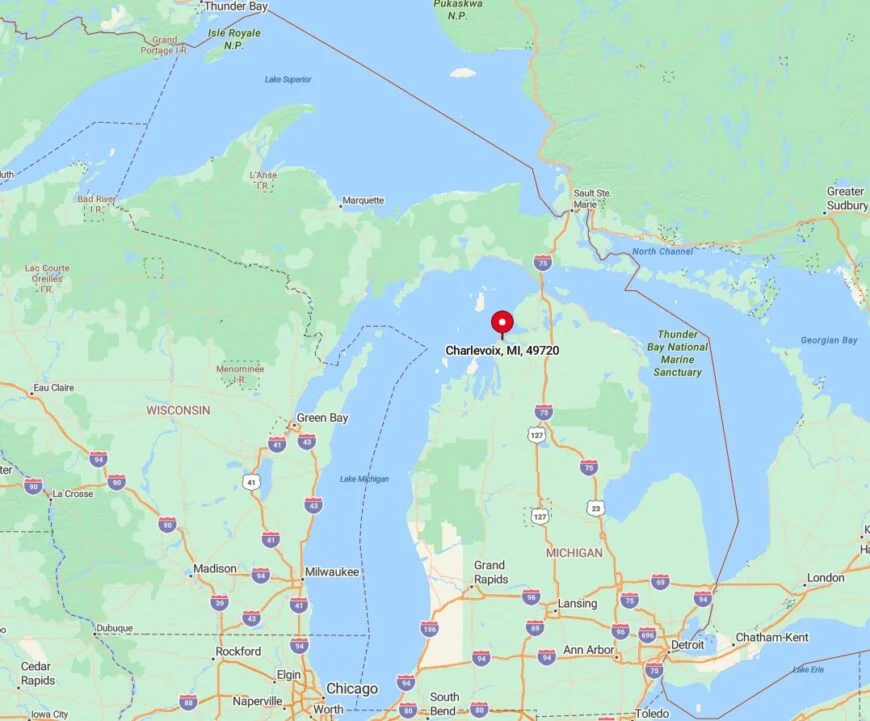
Charlevoix rests along US-31 in Michigan’s northern Lower Peninsula, roughly an hour north of Traverse City and 20 minutes south of Petoskey. The town is squeezed between Lake Michigan, Round Lake, and Lake Charlevoix, a geography that gives it three distinct shorelines within walking distance.
Most visitors arrive via the coastal highway, though small craft pilots can land at Charlevoix Municipal Airport a mile outside town. The South Arm Shuttle offers summertime water-taxi service across Lake Charlevoix, making transportation part of the adventure.
12. Frankfort
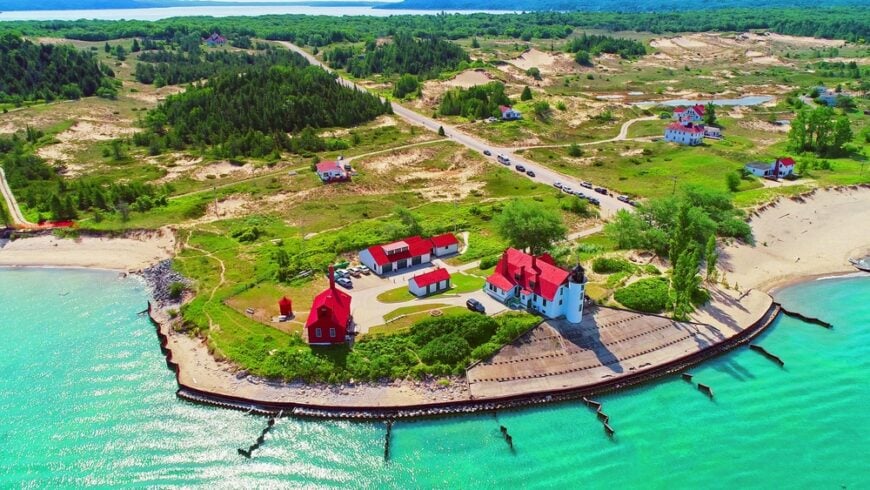
Frankfort charms me with its broad, walkable main street that ends in a cinematic view of the Frankfort North Breakwater Lighthouse jutting into Lake Michigan. Mornings begin with a climb up the grassy bluff opposite town to watch fog lift off Crystal Lake before I pedal the Betsie Valley Trail toward Beulah.
Afternoon means a pint at Stormcloud Brewing and a quick drive to Point Betsie Lighthouse, whose white tower has guarded these shoals since 1858. When the sun drops, locals gather on the beach or nearby Elberta’s hidden dunes for sunsets that set the sky ablaze.
The old Garden Theater still flickers to life with indie films and popcorn, which you can smell half a block away. Frankfort’s mixture of maritime history and laid-back beach culture keeps me returning summer after summer.
Frankfort has 3-4 bedroom homes priced between $300,000 and $600,000, a beautiful coastal town known for its sandy beaches and access to the clear waters of the Great Lakes.
Where is Frankfort?
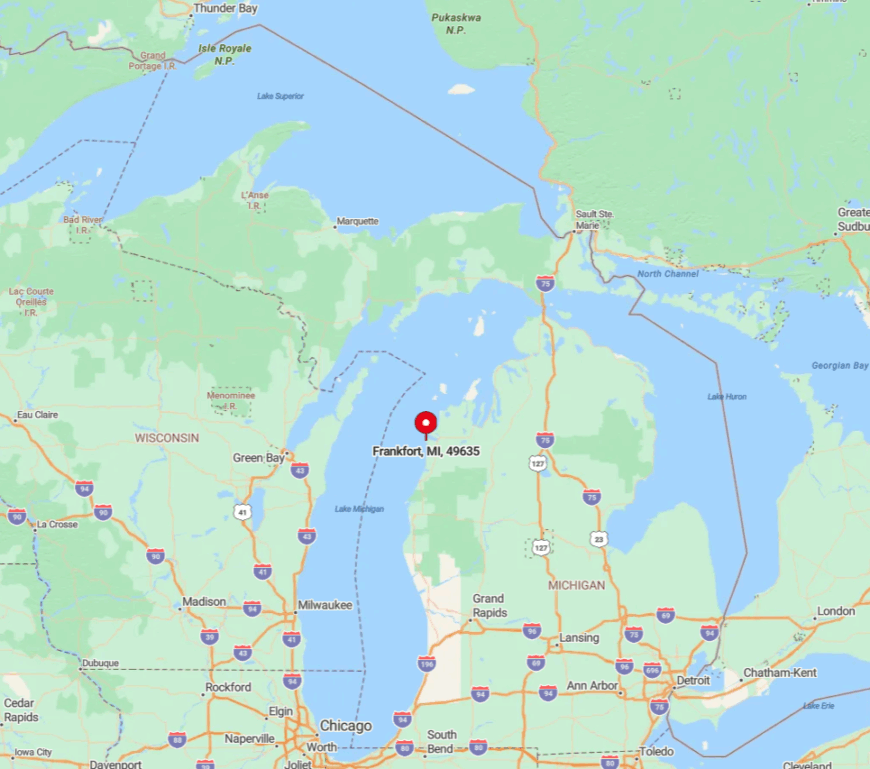
Located in Benzie County, Frankfort hugs the mouth of Betsie Lake along scenic M-22, about 45 minutes southwest of Traverse City. The village is buffered by dunes to the north and Crystal Lake to the east, creating a windswept peninsula feel without the isolation.
US-31 connects visitors from the south, while those on bikes can roll in on the paved Betsie Valley Trail. Because Lake Michigan moderates the climate, the area enjoys cooler summers and extended fall color, perfect for shoulder-season getaways.
11. Petoskey

Petoskey’s Gaslight District has a nostalgic glow that makes me feel like I’ve stepped into a Norman Rockwell painting—brick storefronts, hanging flower baskets, and the occasional whistle of the historic trolley.
I spend mornings hunting for fossilized Petoskey stones at Bayfront Park, then wander up the hill for lunch at City Park Grill, once frequented by Ernest Hemingway. Art lovers will appreciate the rotating exhibits at Crooked Tree Arts Center.
Still, I often detour to the lesser-known Oden State Fish Hatchery, where glass-bottomed viewing chambers reveal trout gliding beneath my feet. Evenings call for sunset on the bluff at Michigan’s oldest continuously operated golf course, followed by chocolate croissants from Johan’s Bakery.
The town doesn’t sleep when winter rolls in—Harbor Springs’ ski hills are only minutes away. Whatever the season, Petoskey pairs postcard views with genuine, old-time warmth.
Petoskey offers 3-4 bedroom homes priced from $350,000 to $650,000, providing a scenic retreat along the Great Lakes, perfect for nature lovers and those seeking outdoor adventures.
Where is Petoskey?
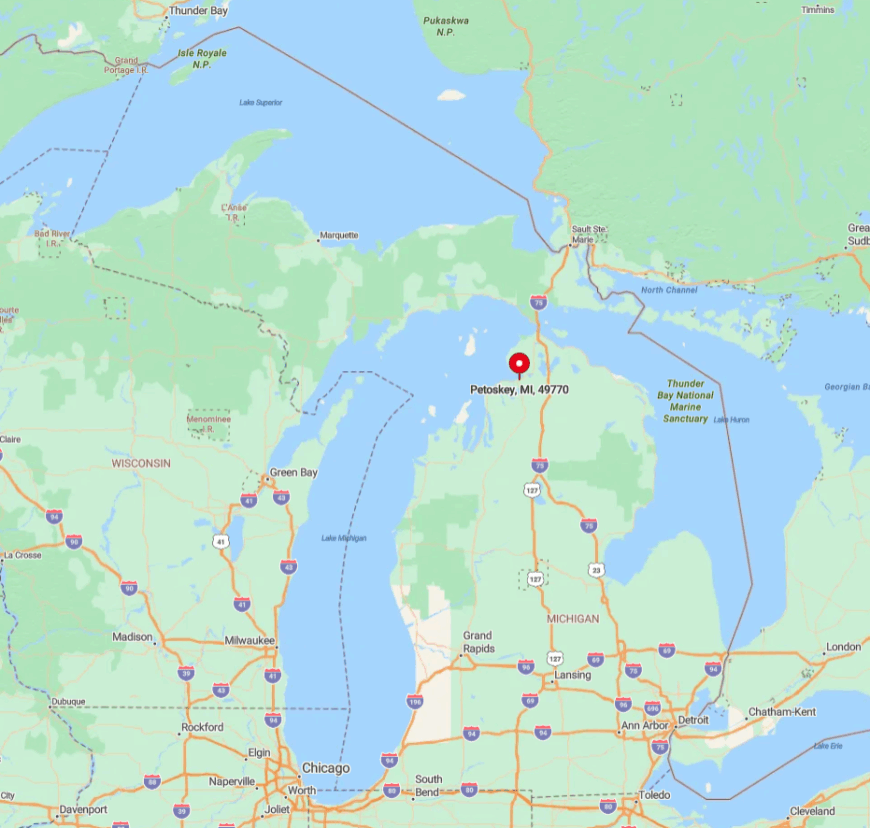
Petoskey sits on Little Traverse Bay in Michigan’s far-north Lower Peninsula, roughly five hours from Detroit via I-75 and US-31. The town anchors one end of M-119’s famous Tunnel of Trees, a 20-mile ribbon of road that turns orange and gold each autumn.
Commercial flights land 20 minutes away at Pellston Regional Airport, and the Lake Michigan car-ferry docks in nearby Charlevoix for those arriving by water. Its bluff-top perch grants sweeping bay views, yet the sheltered harbor keeps sailboats gently bobbing even on blustery days.
10. Harbor Springs
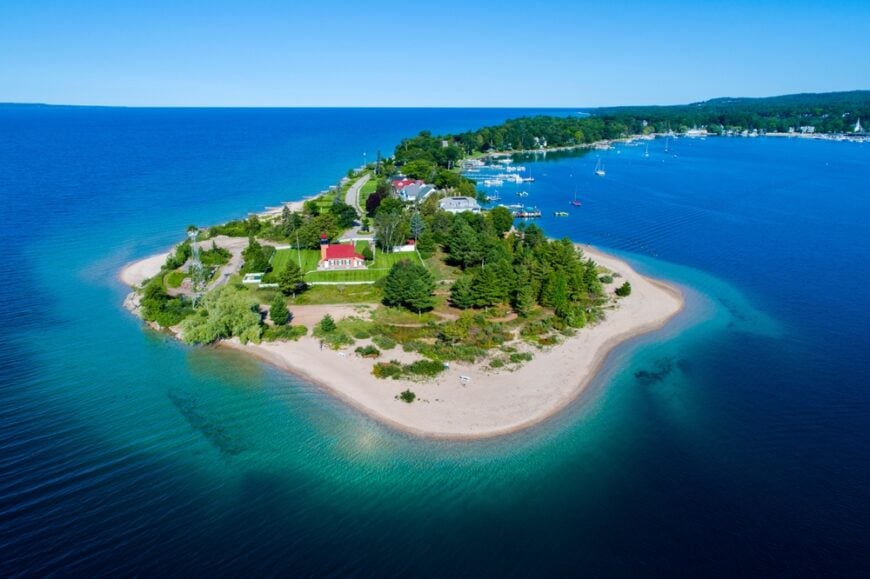
Harbor Springs feels like Petoskey’s quieter, more refined cousin, with clapboard cottages lining a curved bay where wooden sailboats glide past Victorian boathouses. My perfect day starts at Tom’s Mom’s Cookies before renting a bike to tackle M-119’s Tunnel of Trees, stopping at Pond Hill Farm for cider and goat cuddles.
In winter, I trade pedals for skis, carving fresh powder at Nub’s Nob, whose locally loved slopes often match better-known resorts for snow quality without the lift-line fuss. Come dusk, I stroll the waterfront boardwalk, watching the lights pop on in million-dollar summer homes that somehow still feel welcoming.
A hidden treat is the springtime trillium bloom carpeting nearby Thorne Swift Nature Preserve—it’s like walking through a living snowfield of flowers. Harbor Springs may be petite, but it delivers elegance and adventure in equal measure.
Harbor Springs features 3-4 bedroom homes in the $400,000 to $700,000 range, offering a picturesque escape by the Great Lakes, where visitors can enjoy stunning lake views and charming downtown streets.
Where is Harbor Springs?
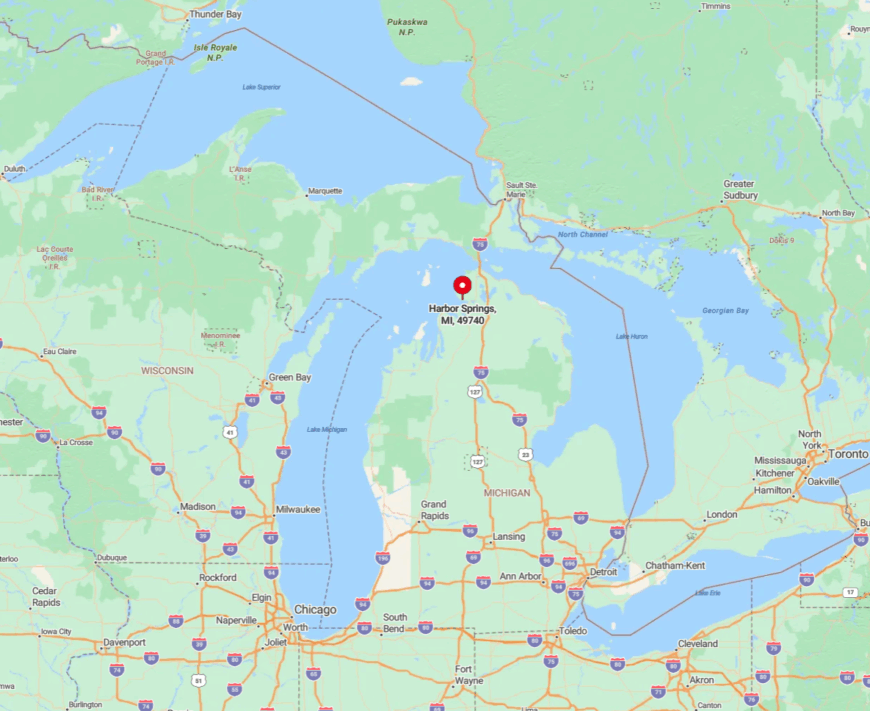
The town nestles on the north shore of Little Traverse Bay, directly across the water from Petoskey and linked by a 15-minute drive around the bay. Drivers reach it by veering off US-31 onto M-119, a route celebrated for its lakeside vistas.
Pellston Regional Airport sits 20 minutes east, while the Mackinac Bridge—and gateway to the Upper Peninsula—lies 30 minutes north via I-75. Sheltered by surrounding hills, the harbor remains calm, making it a favored stop for Great Lakes sailors seeking a peaceful berth.
9. Copper Harbor
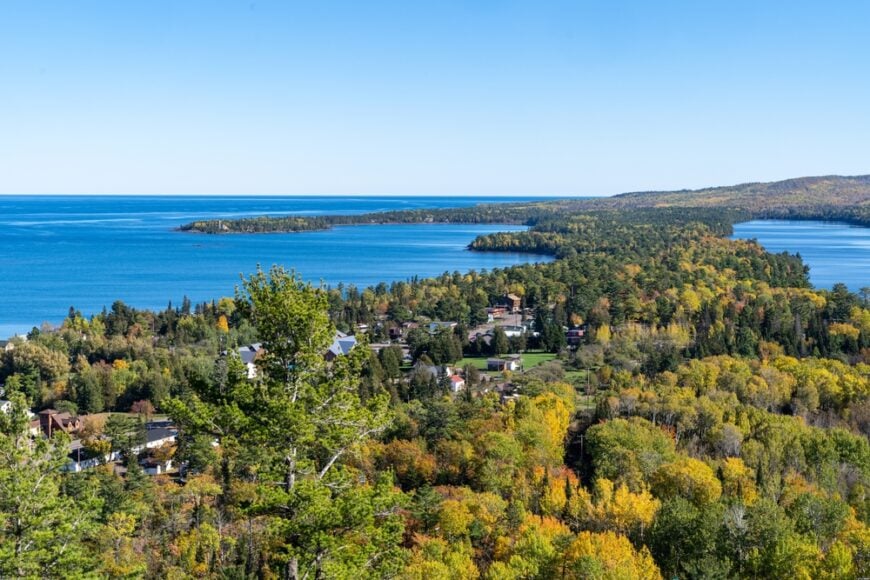
At Michigan’s northernmost tip, Copper Harbor rewards the determined traveler with a wild mix of Lake Superior cliffs, old-growth pines, and star-splashed skies free from city glare. I always drive Brockway Mountain Drive first; from its 1,328-foot summit, I can see Isle Royale on a crystal-clear day.
The village is tiny—one general store, a smattering of lodges—but it’s the launchpad for epic mountain-bike trails rated among the best in the Midwest. History buffs tour Fort Wilkins, while thrill seekers tackle Mount Bohemia’s backcountry ski runs each winter.
Estivant Pines, a pocket of untouched forest where 500-year-old white pines tower overhead, remains my favorite hidden wander. Copper Harbor’s ruggedness might feel remote, yet this remoteness makes the scenery unforgettable.
Copper Harbor presents 3-4 bedroom homes priced between $250,000 and $550,000, a quiet lakeside town perfect for those looking to enjoy the beauty of the Great Lakes and nearby wilderness.
Where is Copper Harbor?
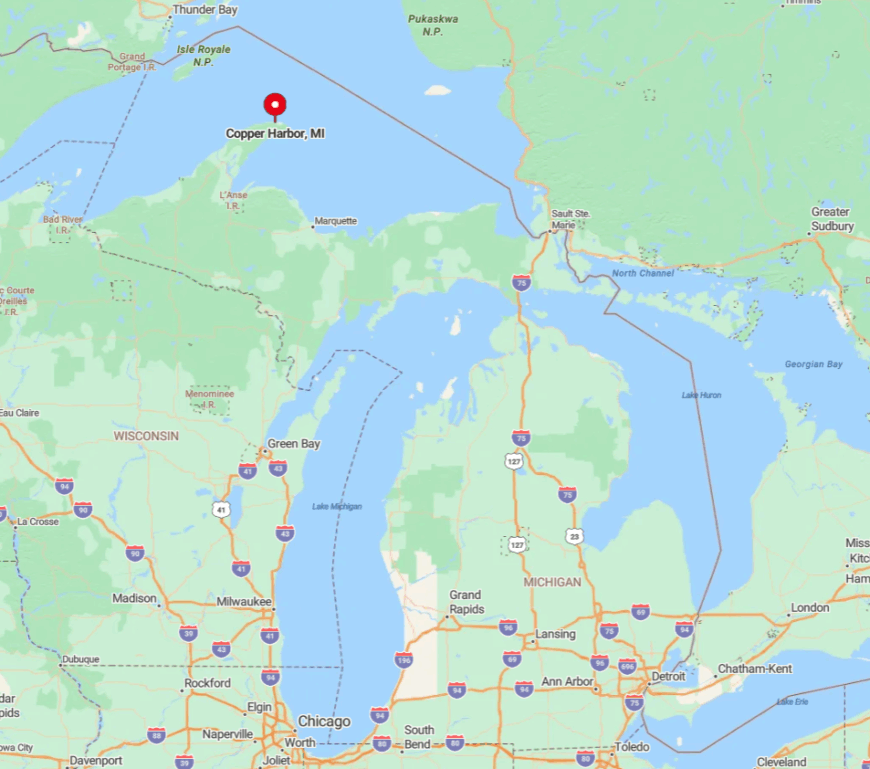
Copper Harbor crowns the Keweenaw Peninsula, the finger of land that juts 65 miles into Lake Superior from Michigan’s Upper Peninsula. US-41 ends here—look for the “Miami 1,990 miles” sign that marks the highway’s northern terminus.
Houghton County Memorial Airport lies 55 miles south, followed by a breathtaking shoreline drive that traces ancient volcanic ridges. Once you arrive, everything is walkable or bikeable, though many choose a sunset kayak for the best view of the lighthouse guarding the harbor mouth.
8. Grand Marais
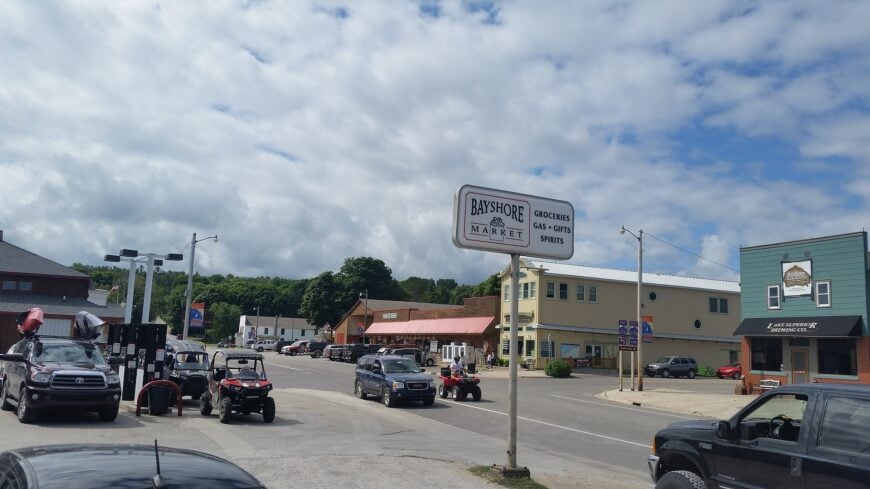
Grand Marais is where time slows to the rhythm of Lake Superior waves lapping a crescent-shaped bay, and that unhurried pace is half its charm. I begin at the Pickle Barrel House—a 1920s novelty cottage shaped like a giant barrel—before heading to Sable Falls, where a stairway leads to a pocket beach perfect for agate hunting.
The nearby Log Slide Overlook reveals dunes plunging 300 feet into the water, a vast vista that feels like standing on the edge of a desert touching an inland sea. Evenings often end at the West Bay Diner, a retro joint where pies cool on the sill while locals debate weather and fishing tales.
The Gitche Gumee Agate Museum is a must-see hidden gem packed with sparkling Lake Superior treasures, and the patient staff are happy to identify your rock finds. For me, Grand Marais exemplifies quiet beauty in its purest form.
Grand Marais offers 3-4 bedroom homes in the $200,000 to $500,000 range, a remote town by the Great Lakes ideal for those seeking solitude and breathtaking natural landscapes.
Where is Grand Marais?
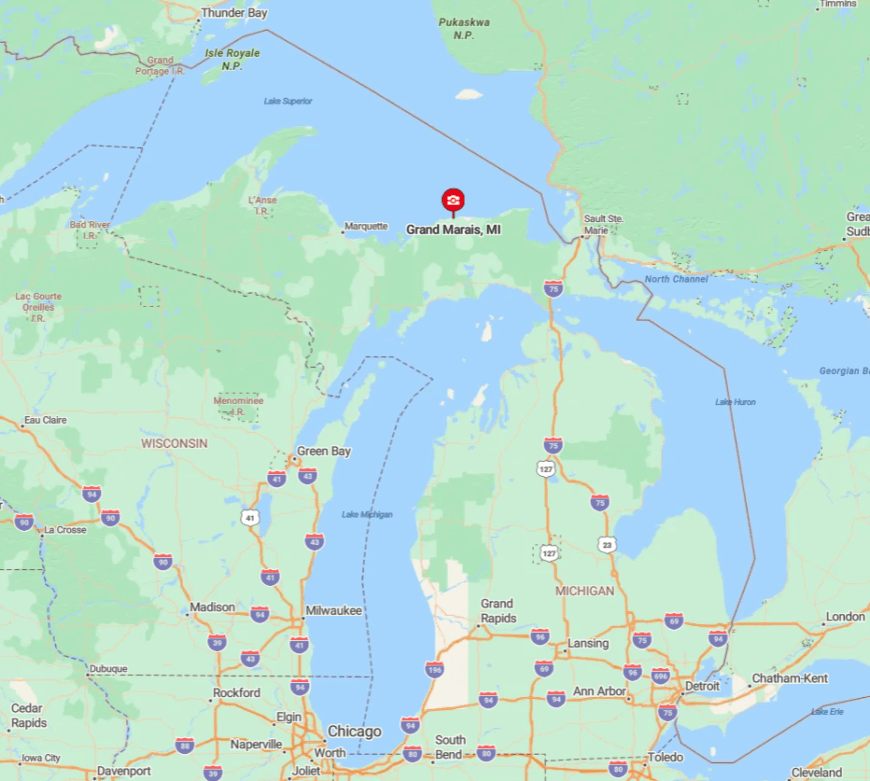
The village sits along Lake Superior’s southern shore, roughly midway between Munising and Paradise, accessible via the winding County H-58 scenic drive. Dense national forest surrounds it, making the town the eastern gateway to Pictured Rocks National Lakeshore.
Because cell service is spotty, I always download maps before leaving US-77 or M-123. The remoteness means night skies remain ink-black and perfect for stargazing—the Milky Way often arcs clearly above the harbor.
7. Glen Arbor
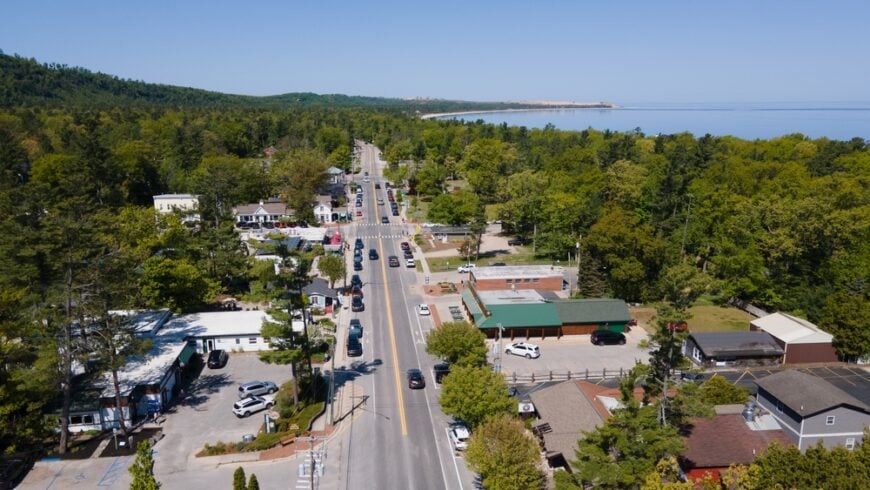
Glen Arbor nestles between the sapphire waters of Glen Lake and the wild shoreline of Sleeping Bear Dunes, a stunning location that regularly lands on “most beautiful places” lists. I paddle the glassy Crystal River in the mornings, where cedar trees arch overhead and otters sometimes trail my kayak.
After fueling up on cherry-flavored everything at Cherry Republic, I head to the Sleeping Bear Heritage Trail for a bike ride through forests that smell pine and lake breeze. The short hike to Pyramid Point is rewarded with a cliff-top view where turquoise water meets bone-white sand far below.
If crowds build at the primary dunes, I slip south to tucked-away North Bar Lake, a warm-water lagoon separated from Lake Michigan by a skinny sandbar. Glen Arbor’s mix of forest shade and dune-top vistas makes it a four-season favorite of mine.
Glen Arbor has 3-4 bedroom homes priced from $450,000 to $750,000, a scenic town nestled near the Sleeping Bear Dunes, offering easy access to the Great Lakes’ clear waters and sandy beaches.
Where is Glen Arbor?
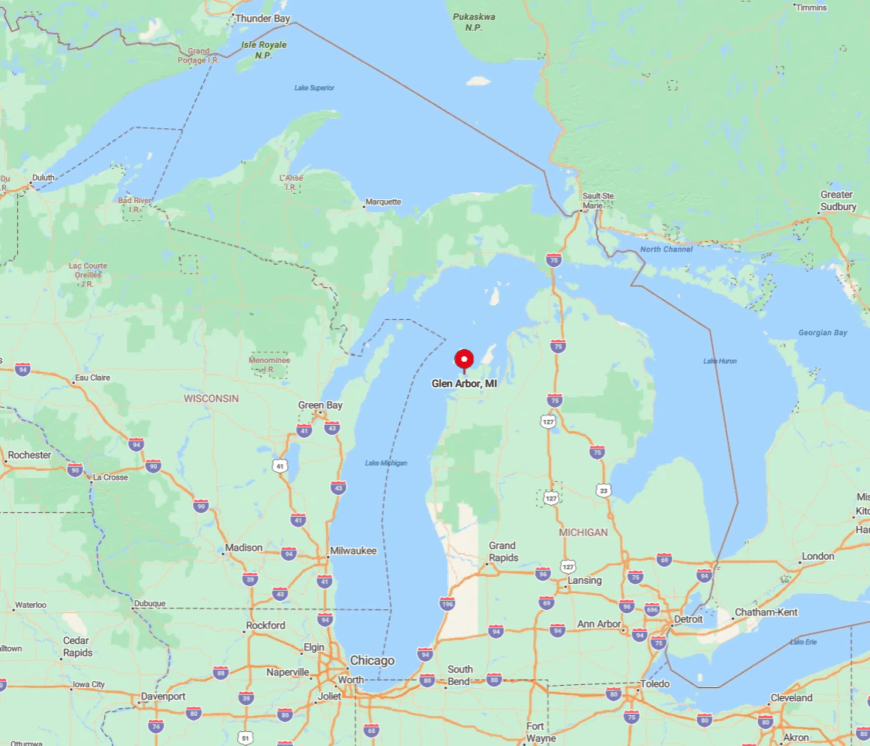
Located on the Leelanau Peninsula’s western edge, Glen Arbor sits along M-22 about 25 miles west of Traverse City. The village is encircled by Sleeping Bear Dunes National Lakeshore, with Pierce Stocking Scenic Drive just minutes away.
Travelers can fly into Traverse City’s airport, rent a car, and reach town in 40 minutes, passing cherry orchards and vineyard vistas en route. Despite the easy access, the pocket-sized downtown stays blissfully quiet once day-trippers head home.
6. Empire
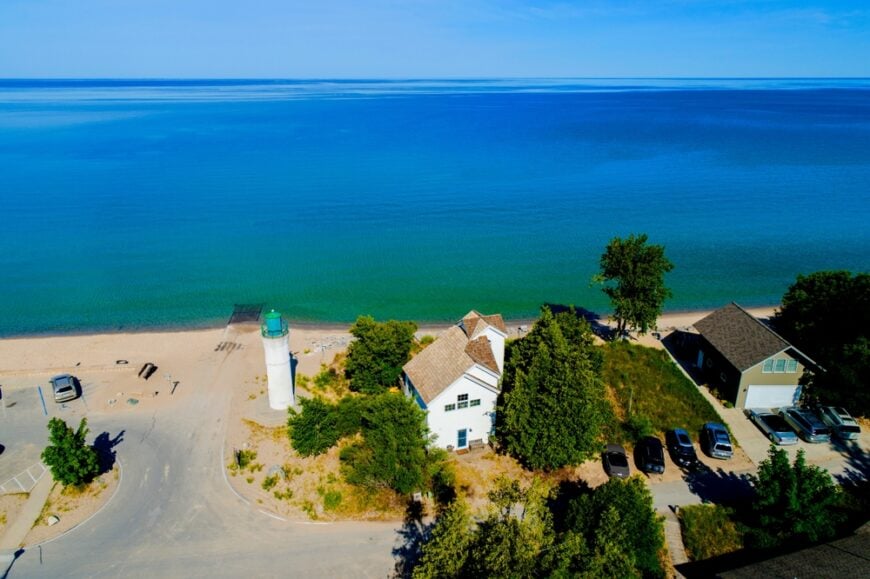
Empire may be small, but its scenery is supersized—step off Main Street and you’re practically on the beach staring up at 450-foot dunes. I usually tackle the Empire Bluff Trail first, a 1.5-mile trek that ends in a panoramic overlook of Lake Michigan and South Bar Lake below.
Back in town, the Philip A. Hart Visitor Center introduces the ecology of Sleeping Bear Dunes, while the tiny Empire Museum hides a 1920s Model T fire engine that kids (and adults) love.
Each May, the quirky Empire Asparagus Festival ushers in spring with a parade led by a stalk-costumed “king,” proving the town takes fun as seriously as scenery. For maritime history, I visit the often overlooked Sleeping Bear Point Coast Guard Station, where exhibits detail heroic 19th-century rescues.
Empire’s vibe is laid-back, scenic, and unexpectedly playful. Empire features 3-4 bedroom homes priced between $300,000 and $600,000, making it a great base for visitors looking to explore the nearby Great Lakes and enjoy the beauty of the surrounding dunes.
Where is Empire?
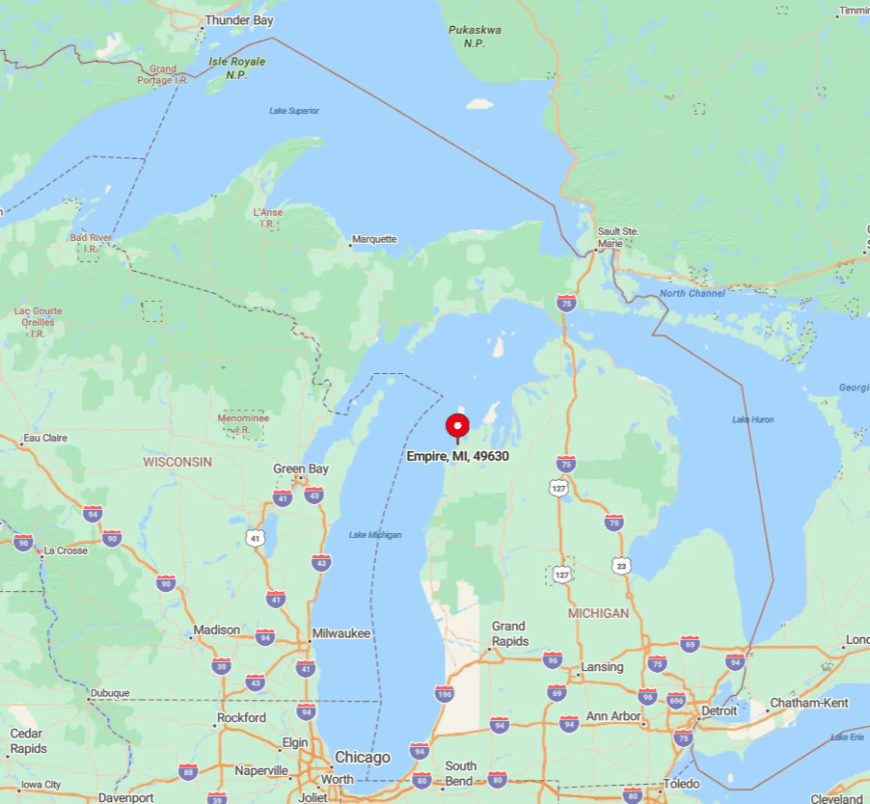
Sitting at the junction of M-22 and M-72, Empire lies 25 miles southwest of Traverse City on Lake Michigan’s eastern shoreline. Because the village is inside Sleeping Bear Dunes National Lakeshore, trailheads and overlooks are a stone’s throw from the post office.
Travelers typically reach it by car, though cyclists on the Sleeping Bear Heritage Trail roll into town. The geography funnels cool lake breezes through the village, making even midsummer afternoons refreshingly comfortable.
5. Ontonagon

Ontonagon feels like the old soul of the Upper Peninsula, where timber-era storefronts line a broad main street that ends at a Lake Superior pier. I often start at the 1867 Ontonagon Lighthouse for a guided tour that ends with sweeping views of the Porcupine Mountains to the west.
Those mountains—known locally as “the Porkies”—lure me for hikes to Lake of the Clouds, where maple ridges plunge into a mirror-calm lake ringed by ancient hemlock.
Back in town, I refuel with a pasty at Syl’s Café before catching sunset from the breakwall as ore boats glide past. Winter transforms the area into a snowmobile paradise, and local outfitters happily share secret powder stashes.
Ontonagon’s combination of history and unspoiled wilderness makes it a gateway to adventure. Ontonagon presents 3-4 bedroom homes in the $150,000 to $450,000 range, an affordable and scenic town perfect for those who want to experience the Great Lakes while surrounded by nature’s tranquility.
Where is Ontonagon?
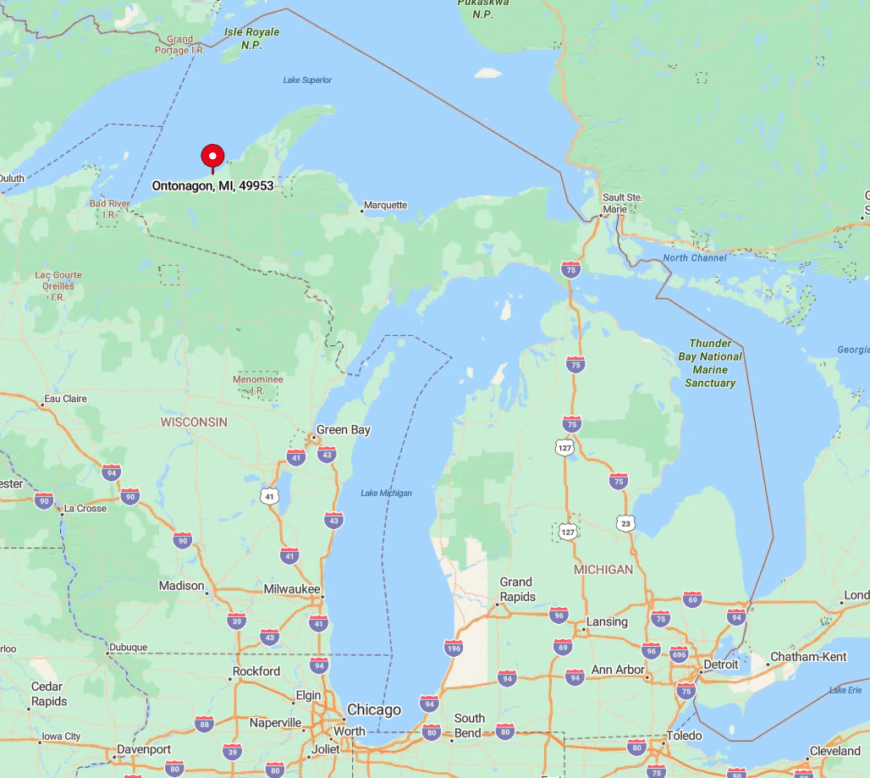
The village occupies Lake Superior’s southern shore at the mouth of the Ontonagon River, about 55 miles west of Houghton via US-45 and M-38. It’s the closest full-service town to Porcupine Mountains Wilderness State Park, only 15 minutes away.
Travelers driving from Wisconsin’s US-2 cut north at Bruce Crossing, enjoying a rolling, forested approach. Because commercial flights are scarce, most visitors road-trip in, which keeps the area blissfully uncrowded even at peak color season.
4. Manistique
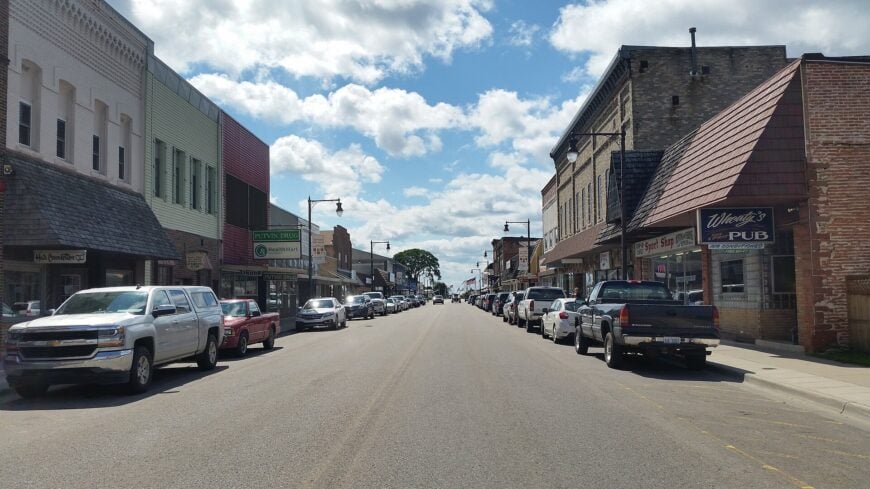
Manistique’s mile-long boardwalk traces Lake Michigan’s shoreline, offering me uninterrupted views of turquoise water and the red-capped East Breakwater Lighthouse.
Mid-walk, I usually detour to Kitch-iti-kipi—the state’s largest spring—where a self-propelled observation raft glides over crystal-clear water so pure you can see 40 feet to dancing sand below. Downtown, shops sell handmade maple syrup and a local delicacy called “yooper bars,” perfect for a sweet pick-me-up.
If you have extra time, stop by the often-missed Thompson State Fish Hatchery to feed juvenile trout splashing in outdoor raceways. Evenings end with a campfire on the beach, the sunset painting the sky while freighters pass like silent cities on the horizon.
Manistique exudes small-town friendliness blended with watery wonders. Manistique offers 3-4 bedroom homes priced from $200,000 to $500,000, providing a lovely lakeside community where visitors can immerse themselves in the Great Lakes’ beauty and rich history.
Where is Manistique?

Manistique sits in Schoolcraft County on Lake Michigan’s northern shore, roughly 90 miles west of the Mackinac Bridge along US-2. The town hugs the Manistique River mouth, making it a natural stop for paddlers on the state-designated Heritage Water Trail.
Delta County Airport in Escanaba lies an hour west for those flying in, though most choose the scenic drive that hugs the shoreline. Limestone reefs offshore mean the water near town often glows Caribbean-blue on sunny days—one of the area’s pleasant surprises.
3. Cheboygan
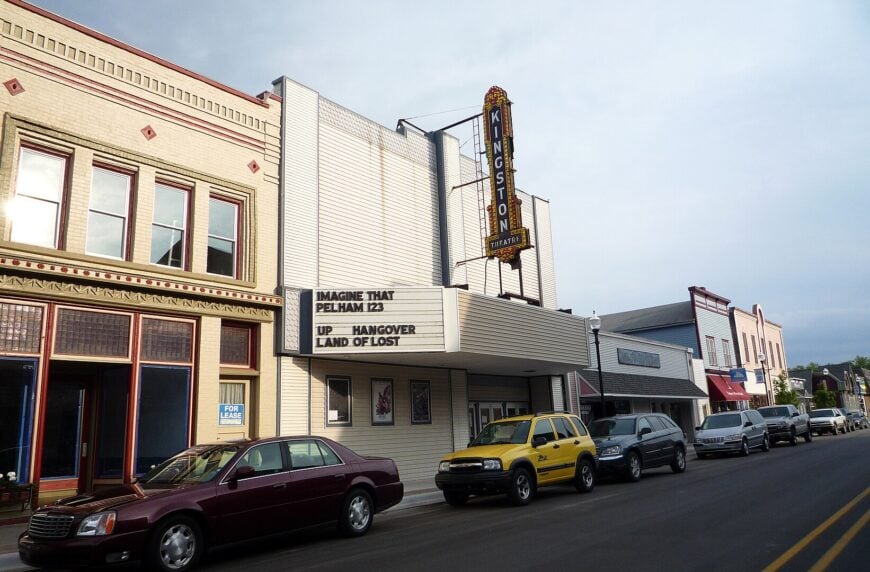
Known as “The Gateway to the Waterways,” Cheboygan offers 40-plus miles of navigable rivers and lakes, a playground I explore by renting a pontoon to cruise from downtown to Black Lake.
The Cheboygan Crib Light, a pint-size lighthouse perched on a breakwater, provides a perfect foreground for sunrise photos over Lake Huron. After lunch at a riverside café, I hop on the North Central State Trail, a rail-trail that leads cyclists through forest corridors alive with birdsong.
A lesser-known gem is the Black Mountain Recreation Area, where rolling sand ridges offer challenging singletrack biking in summer and groomed cross-country skiing come winter. Even the town’s Opera House hosts traveling musicians beneath a beautifully restored 1888 ceiling.
Cheboygan’s mix of water routes and cultural corners never fails to surprise me. Cheboygan features 3-4 bedroom homes in the $250,000 to $550,000 range, offering picturesque views of the Great Lakes and a charming atmosphere for visitors looking to enjoy peaceful waterside strolls.
Where is Cheboygan?
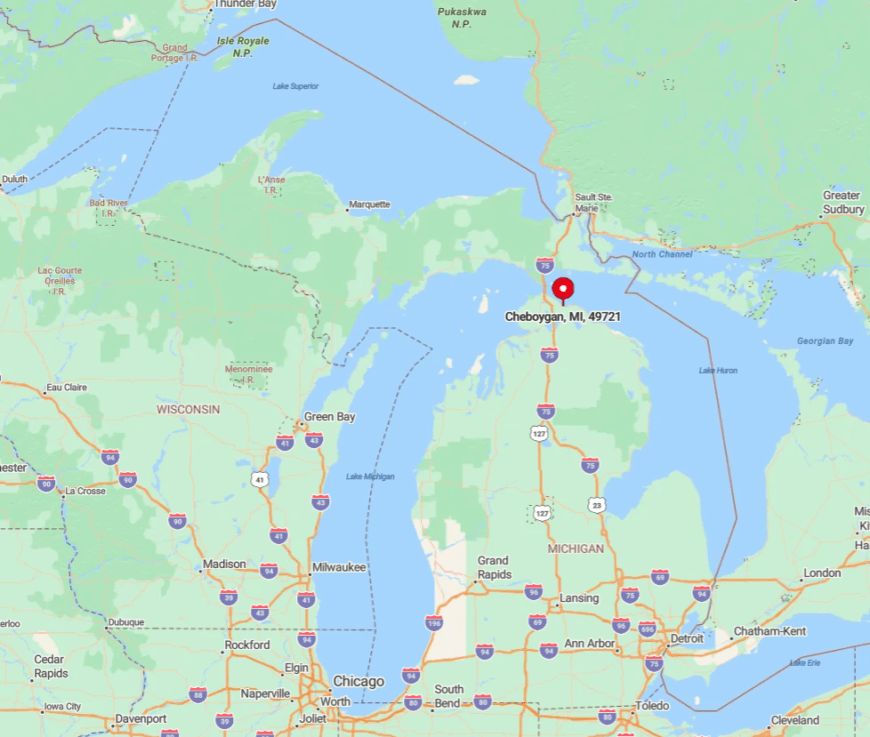
The town rests on Lake Huron’s Straits shoreline, 15 miles east of I-75 via M-27 and US-23, and just 25 minutes south of the Mackinac Bridge. Its geography links the Cheboygan River to the Inland Waterway, allowing boaters to traverse Lake Huron to Lake Michigan without leaving sheltered channels.
Pellston Regional Airport lies 30 minutes west of flyers, while cyclists and snowmobilers love the flat grade of the state trail that slices right into downtown. With islands to the east and forest to the west, Cheboygan enjoys sunrise and sunset water views—a rare double treat.
2. Lexington

Lexington bills itself as “The First Resort North.” Its blend of Victorian storefronts, live-music bars, and sandy coves makes that claim feel justified. Mornings are best spent beachcombing at Tierney Park, where gentle Lake Huron waves deposit sea glass perfect for souvenir jars.
Downtown’s Village Theater hosts surprisingly top-notch concerts, and 3 North Vines pours estate-grown reds that pair well with cheese curds from the Saturday market.
For a quiet escape, I head a mile south to Old Town Hall Winery, housed in a 1876 courthouse and often overlooked by weekend crowds. Summer fireworks over the marina feel like a scene from an old-fashioned postcard.
Lexington’s relaxed coastal rhythm always has me contemplating an extra day’s stay. Lexington has 3-4 bedroom homes priced between $300,000 and $600,000, a quaint lakeside town offering the perfect spot for exploring the Great Lakes while enjoying local shops and outdoor activities.
Where is Lexington?
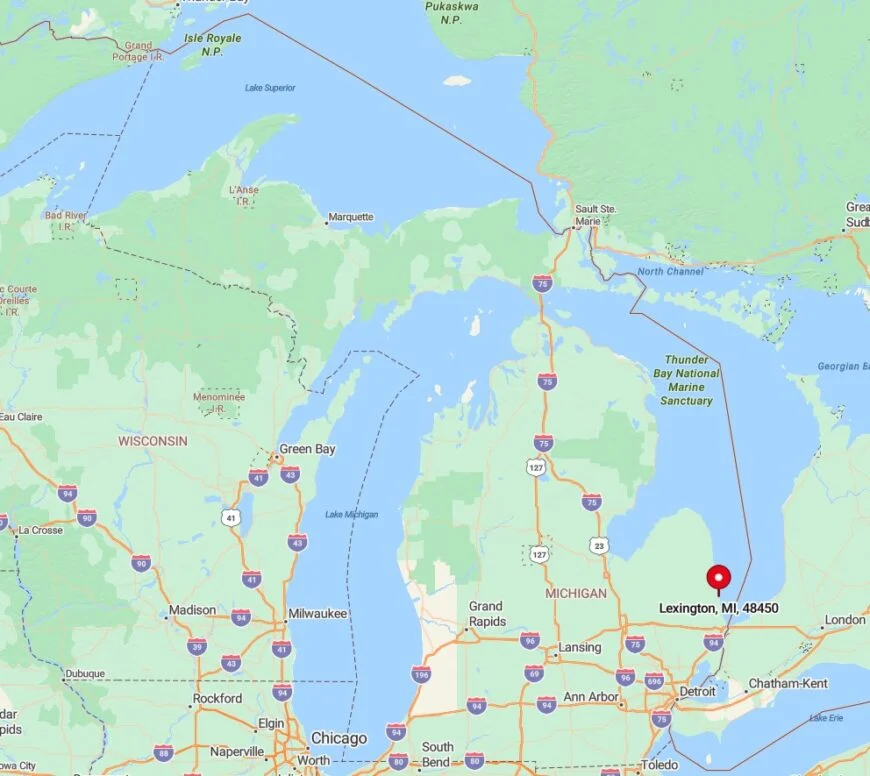
The village lies along the thumb-coast M-25 corridor, about 90 minutes northeast of Detroit and 15 miles north of Port Huron. Set atop gentle bluffs, Lexington overlooks a natural harbor that shelters sailboats from Lake Huron’s moodier seas.
Travelers often arrive via the scenic Blue Water Bridge from Canada, then meander north along shoreline backroads. Starry skies remain bright because the area lacks large chain development, especially from the marina’s outer breakwall.
1. St. Joseph
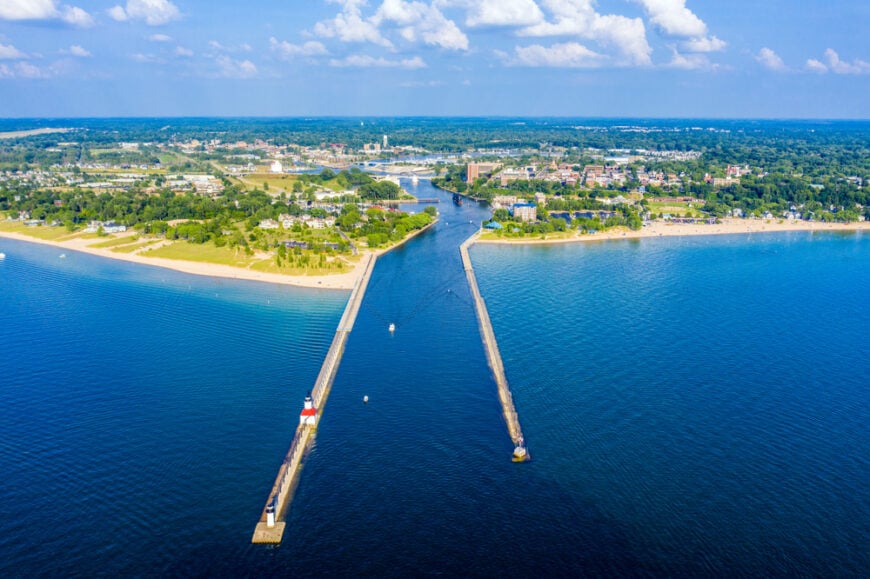
St. Joseph caps my list with a vibrant blend of art, beach life, and small-town energy that rivals much larger cities. I never tire of the bluff-top Krasl Art Center lawn view, where sculptures frame Lake Michigan like an ever-changing painting.
At Silver Beach, families ride the century-old carousel while surfers test the waves near the iconic North Pier Lighthouse.
The weekly farmers market lines the brick streets with fresh peaches and live jazz, and come evening, I grab tacos from the hidden-gem Taqueria Don Chepe before joining locals on the bluff for a sunset that seems to set the whole lake on fire.
Winter transforms the lighthouse into an ice castle, a magical sight that routinely goes viral online. St. Joe’s perfect mix of culture and coastline makes it an unbeatable finale.
St. Joseph offers 3-4 bedroom homes priced from $350,000 to $650,000, a lovely town by the Great Lakes known for its scenic waterfront, cultural attractions, and relaxed lakeside lifestyle.
Where is St. Joseph?

Set at the mouth of the St. Joseph River, the town sits along I-94 in southwest Michigan, just 90 minutes from Chicago and three hours from Detroit. Amtrak’s Pere Marquette line stops downtown, letting train travelers walk straight to the beach in under ten minutes.
The surrounding dunes act as natural amphitheaters, funneling breezes that make kite-flying a local obsession. Proximity to I-196 and US-31 keeps St. Joe easily reachable, yet its bluff-top setting lets it feel miles removed from freeway bustle.


